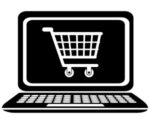
We are delighted to share this guest post from panel data guru Paul Hunter. Paul is the Markley Visiting Professor at Miami University (Oxford, Ohio) where he teaches courses in marketing. In addition, he is the principal of Oxford Analytics consultancy. Paul also serves as a board member of Market Research Institute International (MRII). Previously, Paul was the global CIO for dunnhumby and worked for IRI. When this post was originally published, Oxford Analytics was actively engaged with Fetch Rewards. Paul can be reached at paul.hunter@oxanalytics.com
Editor’s note: This post, originally published in 2018, was updated in 2020 to reflect industry changes and developments. 2020 additions are italicized.
 In my 25+ years in marketing research and analytics, I have always been taught the following:
In my 25+ years in marketing research and analytics, I have always been taught the following:
- All data has compromises, no data is perfect. Thus, always use best available data.
- Value consumer data (panel) over aggregate data (store, market). Thus, select metrics that allow you to understand changes in consumer behavior over time (aka longitudinal panel).
National Consumer Panel: The Gold Standard?

For CPG companies, the “gold” standard in consumer longitudinal panels has always been the data from the National Consumer Panel (NCP), the joint venture created in 2009 between Nielsen and IRI. Prior to 2009, both companies ran their own panels but joined forces in an attempt to raise panel sizes and lower costs. However, NCP’s methodology is still primarily rooted in technology from the 1980s and they still only have about 125,000 panelists. Unfortunately, NCP has not kept pace with today’s consumer and as a result, I believe NCP is no longer best available.
An NCP member agrees to self-scan their groceries after their shopping trip. They can do this with a scan wand and/or a smart phone app. So, if a family bought 40 items in a grocery store, they take whatever device they choose and literally scan the 40 bar codes of each item. After scanning each item, panelists are asked to enter the price they paid for it, either through recall or referencing their receipt. Then they upload their shopping trip to NCP systems. The value proposition to the NCP member is to have “their voice heard”, earn points to redeem for products and to potentially have their name drawn in a sweepstakes (e.g., cruise, car, etc.).
NCP has some serious flaws. Who wants to scan every single item in their basket again, after they were just scanned in the store? Who has the time? As I understand it, NCP panel retention rates on an annual basis are well below 50%. NCP recognizes that they have a poor representation among young families, millennials, and senior citizens. I also understand that NCP agrees they underreport large bags (e.g., charcoal, dog food, etc.) and instant consumables (e.g., candy bar, soda pop, etc.) products which don’t always find their way into the member’s home. Finally, NCP does not ask its members to detail any items they purchased via eCommerce channels (e.g., Amazon, Jet, etc.) – a channel that continues to explode at the expense of traditional brick and mortar channels.
NCP has been used by most major CPG companies for a long time and it’s tough to move away from legacy data sources where you have lots of previous years’ analyses to make comparisons. While NCP’s flaws may have been known, it was the only game in town. However, there are now alternatives that have matured into richer and more accurate sources than NCP. As a result, I believe now is the time to consider making a change. Here are some better choices for longitudinal panels, as follows:
- New Age panels – Numerator (formerly InfoScout), Fetch Rewards, Ibotta, Checkout 51, Slice Drops are some of the better known providers – which leverage optical character recognition (OCR) via photographing (aka scanning) the receipt.
- Loyalty card databases – Catalina, Walgreens, Kroger, etc. – which have broad enough demographics and geography to serve as a surrogate for a national panel.
New Age Panels: OCR Methodology
Optical character recognition (OCR) to photograph retail receipts is by no means perfect. However, it is getting better and faster all the time. For example, a few years ago it could take a few hours for a receipt to be processed by an OCR application. Today, with advances in technology, OCR processing is happening in real time. OCR captures everything you see on a retail receipt – store name, street address, phone number, loyalty card number and all the item detail within (e.g., product description, UPC number, pricing, etc.). Even very long receipts can be processed by photographing section by section.
More than 50% of USA retailers place the UPC number on their receipts. For those that do not, where only descriptions are printed on the receipts, algorithms are written to attach UPCs based on those descriptions. Another issue with OCR is character transposition (e.g. “Tide Laundry” is picked up by the OCR engine as “Tdie Landry”). Quality control procedures which use the UPC number or other algorithms are employed to adjust these predictable problems. As with all data sources, there are compromises and estimations that come with OCR, but I believe they outweigh the shortcomings previously discussed with NCP.
New Age Panels: Leading Providers
 Numerator cleverly collects shopper data through two apps with different value propositions. Receipt Hog rewards users directly with money for each receipt scanned (aimed more at millenials) and Shoparoo rewards schools for each receipt scanned (aimed more at young families, grand parents). Numerator has about 500,000 panelists in the U.S. as of June 2020, though they only actively report on a subset of that mirror the U.S. population. As a pure market research company, Numerator represents the closest competitor to the traditional Nielsen/IRI panels.
Numerator cleverly collects shopper data through two apps with different value propositions. Receipt Hog rewards users directly with money for each receipt scanned (aimed more at millenials) and Shoparoo rewards schools for each receipt scanned (aimed more at young families, grand parents). Numerator has about 500,000 panelists in the U.S. as of June 2020, though they only actively report on a subset of that mirror the U.S. population. As a pure market research company, Numerator represents the closest competitor to the traditional Nielsen/IRI panels.
 Fetch Rewards is a communications and media platform first, with insights as the company’s secondary line of business. It is used by leading CPGs (e.g., PepsiCo, Unilever, Miller Coors, Kimberly-Clark, etc.) to not only promote specific products to consumers but to also understand their entire purchasing behavior over time. Users are incentivized to scan all their receipts, irrespective of whether promoting CPG items are on the receipt. Fetch Rewards has over 3.2 million active users (as of June 2020) and is on track to reach 5 million by the end of 2020.
Fetch Rewards is a communications and media platform first, with insights as the company’s secondary line of business. It is used by leading CPGs (e.g., PepsiCo, Unilever, Miller Coors, Kimberly-Clark, etc.) to not only promote specific products to consumers but to also understand their entire purchasing behavior over time. Users are incentivized to scan all their receipts, irrespective of whether promoting CPG items are on the receipt. Fetch Rewards has over 3.2 million active users (as of June 2020) and is on track to reach 5 million by the end of 2020.
Both Numerator and Fetch Rewards collect data across all traditional channels, plus eCommerce. Because they start with so many more panelists with NCP, Fetch and Numerator are able to be stricter about how often panelists need to submit data to be included in the static, longitudinal panel used for analysis. And even with this stricter criteria, Fetch and Numerator still end up with bigger static panels than NCP. Net, more users, more trips, more channels and simply more data to analyze consumer insights with these new age panels.
Both the Numerator and Fetch Rewards allow clients to survey their users. NCP does as well but, with only about 125,000 users, NCP is forced to throttle the survey pipeline due to low sample sizes, panelist fatigue, and concerns that surveys may be influencing behavior. By contrast, the size of Numerator and Fetch Rewards panels affords them the ability to fuse attitudinal data to their behavioral data at a greater propensity.
 I believe Nielsen recognizes the shortcomings with NCP. Perhaps that’s why they started their own OCR efforts via Snapstar. However, at last check, Snapstar appears to have been shut down.
I believe Nielsen recognizes the shortcomings with NCP. Perhaps that’s why they started their own OCR efforts via Snapstar. However, at last check, Snapstar appears to have been shut down.
Both Numerator and Fetch Rewards continue to expand their collection of eCommerce retailer receipt data (e.g., Amazon, walmart.com, etc.). This is especially important in 2020, with COVID-19 accelerating grocery eCommerce from what would have taken 5-10 years into ~3-months. Tapping into eCommerce receipts is not always easy to do as their user base has to hand over User ID and PW login credentials to access these eCommerce accounts. If you ever look at an Amazon email receipt it is purposefully scant on details and the only way to get to the item level detail is to get into the account itself. Net users must trust these platforms and methodologies.
As more and more grocery retailers are doing click and collect, home delivery, alignment with Instacart / Shipt, etc. then this area will be interesting to keep an eye on. Indeed, one could see Instacart being a source for consumer insight one day soon, if not already.
Another Alternative: Retailer Loyalty Card Databases
![]() Further, as I understand it, to make up for the short comings of NCP and further differentiate itself from IRI, Nielsen also offers a Homescan “plus” service, at a premium, by fusing loyalty card data from about one million users from their Nielsen Catalina Solutions (NCS) joint venture. Thus, a hybrid of methodologies to try and obtain the best consumer data.
Further, as I understand it, to make up for the short comings of NCP and further differentiate itself from IRI, Nielsen also offers a Homescan “plus” service, at a premium, by fusing loyalty card data from about one million users from their Nielsen Catalina Solutions (NCS) joint venture. Thus, a hybrid of methodologies to try and obtain the best consumer data.
 Speaking of loyalty card data, some retailers have tens of millions of shoppers. Among the dozen or so top retailers (e.g., Walgreens, Kroger, Safeway / Albertsons, etc.) in the USA, nearly ~80% of them have programs in place that allow a CPG to tap into their loyalty card data. For example, Walgreens has stores in every USA state and almost every one of the ~120 million USA households can access their stores. Whereas Kroger, while not in every state, has a variety of banners and maintains data on over ~80 million households.
Speaking of loyalty card data, some retailers have tens of millions of shoppers. Among the dozen or so top retailers (e.g., Walgreens, Kroger, Safeway / Albertsons, etc.) in the USA, nearly ~80% of them have programs in place that allow a CPG to tap into their loyalty card data. For example, Walgreens has stores in every USA state and almost every one of the ~120 million USA households can access their stores. Whereas Kroger, while not in every state, has a variety of banners and maintains data on over ~80 million households.
While loyalty card data is not perfect, by applying a static to its members and only analyzing shoppers who are repeatedly seen, it can serve as a representative longitudinal panel of consumers. Indeed, at my time working for dunnhumby, we repeatedly did this and compared static consumer sets from a retailer to aggregated national syndicated data and found the patterns in sales to almost be perfectly correlated. In situations where the retailer’s size and presence was reflective of the nation at large (as was the case with our Kroger data), the CPG companies were able to extract consumer insight within weeks after a marketing event, understand the consumer over time and even extend those conclusions to their shoppers in general.
Consumer Data: Critical Ingredients for Marketing Decisions
Understanding the consumer, and thus having access to consumer data, is essential to marketing. How has household penetration for your brand changed over time? What is the trial and repeat of your product? What is the source of volume for your new brand? Which channels / retailers are in favor with consumers today? Without consumer data you can rely upon, you cannot answer these basic marketing questions. And these questions are just as important as market share and allow a marketer to determine future actions.
 Has NCP’s time come to an end? I believe so. It is no longer gold to me. Better methodologies and data exist today. CPGs should consider overinvesting in panels that better measure consumers across all today’s consumer channels – from traditional bricks and mortar to eCommerce. Indeed, I know many CPGs that are in the process of testing these “new age” providers and/or have already made the switch.
Has NCP’s time come to an end? I believe so. It is no longer gold to me. Better methodologies and data exist today. CPGs should consider overinvesting in panels that better measure consumers across all today’s consumer channels – from traditional bricks and mortar to eCommerce. Indeed, I know many CPGs that are in the process of testing these “new age” providers and/or have already made the switch.
With the recent split of Nielsen into two companies, “watch” and “buy”, let’s hope Nielsen begins to innovate on the buy-side with consumer data, but they are still using 40+-year-old methods and have lots of ground to catch up. I hope we can continue to get more accurate household-level data to power consumer insights going forward. As Len Lodish taught us in his classic book, “Advertising and Promotion Challenge: Vaguely Right or Precisely Wrong“, marketing is all about changing consumer behavior. While syndicated store data is great for many things, you still lack consumer insight that longitudinal panels provide.

Very interesting article! Thanks!
Do you have an idea of what the French landscape looks like?
Do you know if any of these new, more reliable, players are operating in the French market, or if there are similar French players?
Or is it a market still pretty much dominated by Nielsen, IRI, Kantar?
Many thanks in advance!
I asked Paul Hunter to respond to your question and here’s what he says:
Other receipt scanning apps (e.g., iBotta), like Fetch Rewards, which started in the USA, are still exclusively in the USA.
Thanks a lot Sally and Paul. Very interesting and useful! Best,
I am working at a CPG brand in the US, but we won’t be able to dig into the actual shopping behavior shifts by regions, by SKUs, by demographics, by channel, due to the limited sample size with Circana. Our nationwide penetration is under 10%. Would you give any recommendation on any other vendors that may provide the granular data? Thank you!
Numerator has a larger panel so might have a better sample size for your product. Another option might be working with retailers who have robust shopper samples (like Kroger, through the analytics company 84.51).
Thank you so much Sally! I will look into your recommendations.